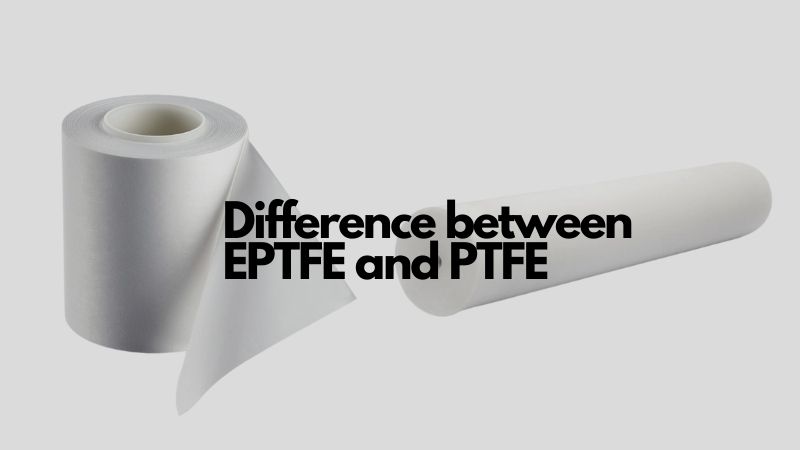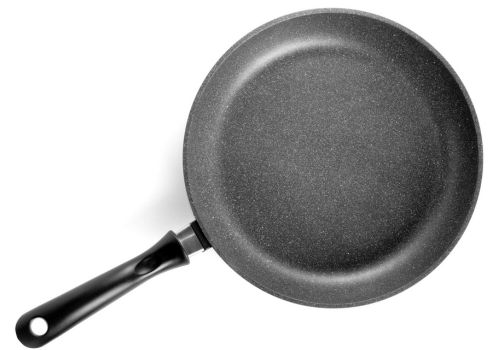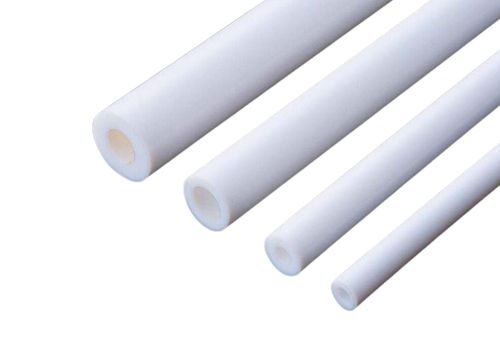
PTFE (Teflon) and EPTFE (Enhanced PTFE) are both unique materials that have proven to have their unique capabilities. Their unique features make them beneficial. Read on to know more.
EPTFE and PTFE – Comparing Properties
Pore Size
EPTFE is low at <1 micron which means it has small pore sizes with PTFE pore sizes ranging from 0.2 µm as well as 0.5 µm which are small as well.

Color
PTFE has a unique translucent color, particularly when the right raw polymer grades are chosen and EPTFE is white in color.
Material
PTFE is not your usual type of fluoropolymer. It is made of tetrafluoroethylene through polymerization.

EPTFE is a novel medical polymer material type made of polytetrafluoroethylene resin through unique processing methods such as stretching, etc. Also, this material is very soft. It feels like a sponge.

Strength Abilities
EPTFE has a very high level of tensile strength. On the other hand, PTFE can stand strong against cold flow and creep.
Chemical Resistance
PTFE has a very high chemical resistance feature. Its lack of chemical reactions makes it perfect for cookware.
EPTFE comes with chemical resistance with higher linear strength. It is also chemically inert.
Temperature Resistance
PTFE can work continuously to the temperature of 260°C. Similarly, EPTFE can work up to 260°C.
Friction
PTFE has low friction co-efficiency from 0.05 to 0.10.
EPTFE has a 0.01-0.04 coefficient of friction which is lower compared to PTFE.
Electrical Resistance
PTFE has a very high level of electrical resistance. On the other hand EPTFE has a good resistance to electricity feature.
Dielectric EPTFE and PTFE Comparison
EPTFE comes with very low dielectric constant from 2.1 to 1.3. While PTFE has 2.02 dielectric constant with loss tangent of 0.00022.
UV Resistance
EPFTE comes with the finest UV resisting and radial expansion features.
Comparing, PTFE comes with good ultraviolet resistance. This is because its carbon-fluorine bond is very strong.
Absorbency or Porosity
EPTFE comes with different levels of porosity which include low, medium, and high density.
Looking at PTFE, it is nonporous and non-absorbent.
Safety
PTFE and EPTFE both come with non-toxic and hygienic features.
EPTFE vs PTFE – Their Applications
Food and Beverage Industry
PTFE can be found in manufacturing microwaves, conveyor belts rollers, non-stick surface covers, waffle irons, temperature sensor casings, coffee makers, rice cookers, and more – all in the food and beverage industry.
EPTFE is not used regularly or more in the food and beverage industry.

Medical Industry
PTFE is used to make heart patches, ligament replacements, cardiovascular grafts, forceps, sutures, catheters, etc.
EPTFE is used to make vascular components, dental floss, catheters, sutures, implants, endoscopic working channels, etc.
Electronic or Electrical Industry
PTFE is used for or in loudspeakers, robots, radio insulations, motors, capacitors, flexible printed circuit boards, general insulations, optical fibers, thermocouples, etc.
As for EPTFE, it is ideal for making electrical insulators.
Chemical Industry
PTFE is used for coating heat exchangers, for making reaction vessels, autoclaves, impellers, containers, high pressure oil pipes, valves, rolling mills, diaphragms, cold pressure systems, pumps, etc.
EPTFE is the ideal material for micro-porous membranes, gaskets, sealants, chemical pipe flanges, etc.

Construction Industry
PTFE is ideal for electrical wire securing, gas line hoses, gas line pipes, etc.
EPTFE is ideal for making evening out ridges and bumps in pipes and achieve the right seal.
Solar Panel Making Industry
PTFE is ideal for coating solar panel sheets, solar laminators, etc.
EPTFE is not used much in this industry.
Industrial Manufacturing Industry
Some PTFE applications include O-rings, joints, bushings, pipe linings, saw blades, gears, sliding plates, etc.
EPTFE applications in this industry include industrial fluid transporting and sealing, and in compression packaging, construction fabrics, sewing thread, etc.
Oil and Gas Industry

PTFE applications include seats and plugs, bearings, pipe coatings, pump coatings, coating valve parts, coating non-stick surfaces, etc.
EPTFE applications include controlled gas flow equipment, cable assemblies, pipe linings, pumps, etc.
Utility Industry
EPTFE applications include filtration vents, hoses etc.
PTFE applications include pipe lining to seal all leakages, hoses, etc.
Conclusion
Reading through these comparisons, you will get to know that the difference between PTFE and EPTFE is not so vast. However, they both work best in specific industries based on what you need to use them for.
Investing in research to ensure purchase is made from the right source is very important.
More resources:
PTFE Manufacturing – Source: Hansaplas
PTFE Applications – Source: Hansaplas



